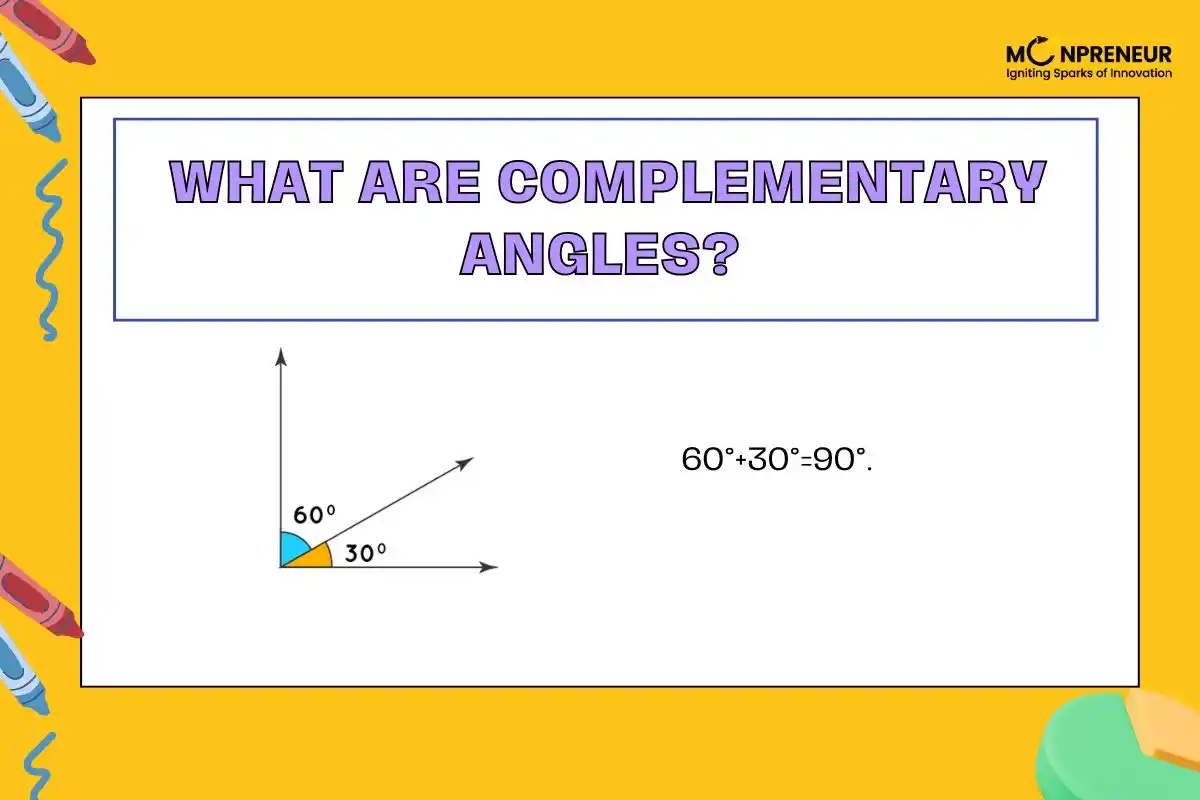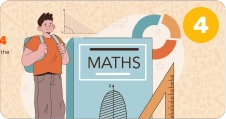Introduction
Angles are everywhere around us – from the corners of a book to the design of bridges. In mathematics, when two lines meet at a point, they form an angle, denoted by the symbol ∠. The term “angle” comes from the Latin word angulus, which means corner.
Among the different types of angles, complementary angles hold a special place because of their strong connection with right angles, trigonometry, and geometry. In this article, we’ll explore the definition, basics, properties, types, real-life applications, and common misconceptions about complementary angles with clear examples.
What are Complementary Angles?

Two angles are called complementary if their measures add up to exactly 90 degrees.
👉 If \(\angle A + \angle B = 90^\circ\), then \(\angle A \text{ and } \angle B\) are complementary angles.
- Example: 30° and 60° are complementary because 30° + 60° = 90°.
- Example: 45° and 45° are complementary because 45° + 45° = 90°.
Each angle is said to be the complement of the other.
Complementary Angles Basics
Students often confuse complementary and supplementary angles. Here’s the key difference:
- Complementary Angles → Sum = 90° (form a right angle).
- Supplementary Angles → Sum = 180° (form a straight line).
Example:
- A 40° angle and a 50° angle are complementary.
- A 120° angle and a 60° angle are supplementary.
Formula to find the complement of an angle:
Complement of \(x^\circ = 90^\circ – x^\circ \quad \)
So, if an angle measures 25°, its complement is 65°.
Types of Complementary Angles
Complementary angles are classified into two types:
| Type | Description |
|---|---|
| Adjacent Complementary Angles | When two complementary angles share a common arm and vertex. Example: \(\angle X = 30^\circ, \quad \angle Y = 60^\circ \; (\text{side by side})\). |
| Non-Adjacent Complementary Angles | When two complementary angles do not share a common arm or vertex but still add up to 90°. Example: \(\angle M = 20^\circ, \quad \angle N = 70^\circ\). |
How to Find Complementary Angles?
If you know one angle, you can easily find its complement by subtracting it from 90°.
Example 1
Find the complement of 61°.
\(90^\circ – 61^\circ = 29^\circ\)So, the complement is 29°.
Example 2
Are 46° and 44° complementary?
\(46^\circ + 44^\circ = 90^\circ\)✔ Yes, they are complementary.
Example 3
Two angles are complementary. One is 12° more than the other. Find the angles.
Let smaller angle = \(x\)
Other = \(x + 12\)
\(x + (x + 12) = 90\)
\(2x + 12 = 90\)
\(2x = 78 \;\;\Rightarrow\;\; x = 39^\circ\)
Other = 51°
✔ Angles are 39° and 51°.
Complementary Angles in Trigonometry
Complementary angles are extremely useful in trigonometry, especially because trigonometric ratios of complementary angles are linked.
For any angle A:
- sin(90° − A) = cos(A)
- cos(90° − A) = sin(A)
- tan(90° − A) = cot(A)
- cot(90° − A) = tan(A)
- sec(90° − A) = cosec(A)
- cosec(90° − A) = sec(A)
This relationship helps solve problems in right triangles, projectile motion, navigation, and surveying
Real-Life Applications of Complementary Angles
- Architecture & Engineering: Calculating load angles in buildings, bridges, and road designs.
- Navigation & Surveying: Measuring distances and directions using right triangles.
- Physics: Used in projectile motion, reflection, and optics.
- Robotics & AI: Programming movement and positioning often involves angle calculations.
Common Misconceptions About Complementary Angles
- Myth: Complementary angles must always be adjacent.
Truth: They don’t have to be adjacent. Any two angles that add to 90° are complementary. - Myth: Complementary and supplementary angles are the same.
Truth: Complementary = 90°, Supplementary = 180°. - Myth: Complementary angles only exist within a right angle.
Truth: Any two angles adding to 90° (even separately) are complementary.
Conclusion
Complementary angles form the foundation of many geometry and trigonometry problems. By remembering that their sum is 90°, students can quickly calculate missing angles, solve right triangle problems, and apply trigonometric identities. Beyond textbooks, complementary angles are used in engineering, physics, architecture, and navigation, proving their importance in both mathematics and real-world applications.
Want to spark your child’s interest in math and boost their skills? Moonpreneur’s online math curriculum stands out because it engages kids with hands-on lessons, helps them apply math in real-life situations, and makes learning math exciting!
You can opt for our Advanced Math or Vedic Math+Mental Math courses. Our Math Quiz for grades 3rd, 4th, 5th, and 6th helps in further exciting and engaging in mathematics with hands-on lessons.
FAQs on Complementary Angles
Q1. What is the definition of complementary angles?
Q2. Can two obtuse angles be complementary?
Q3. Can two right angles be complementary?
Q4. Are the two acute angles of a right triangle always complementary?
Q5. What is the complement of 27°?
Related Blogs:
How to Teach Adjacent Angles to Kids | Simple & Fun Guide
What are Congruent Angles?
Understanding Alternate Interior Angles
What is the Area of Trapezoid?
What is the Area of Parallelogram?
Understanding the Geometry Regents: A Comprehensive Guide
How to Prepare for the Geometry Regents: Study Plans & Practice
The Art of Geometry: How to Draw an Equilateral Triangle Inside a Circle













